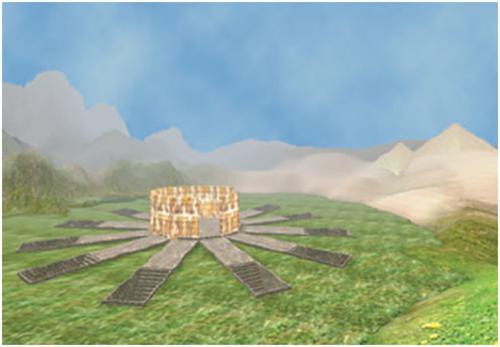当前位置:
X-MOL 学术
›
Eur. J. Nerosci.
›
论文详情
Our official English website, www.x-mol.net, welcomes your feedback! (Note: you will need to create a separate account there.)
The BDNF val66met polymorphism is associated with decreased use of landmarks and decreased fMRI activity in the hippocampus during virtual navigation
European Journal of Neroscience ( IF 3.4 ) Pub Date : 2021-09-01 , DOI: 10.1111/ejn.15431 Greg L. West 1 , Kyoko Konishi 2 , Kathleen MacDonald 2 , Anjie Ni 2 , Ridha Joober 2 , Veronique D. Bohbot 2
European Journal of Neroscience ( IF 3.4 ) Pub Date : 2021-09-01 , DOI: 10.1111/ejn.15431 Greg L. West 1 , Kyoko Konishi 2 , Kathleen MacDonald 2 , Anjie Ni 2 , Ridha Joober 2 , Veronique D. Bohbot 2
Affiliation

|
People can navigate in a new environment using multiple strategies dependent on different memory systems. A series of studies have dissociated between hippocampus-dependent ‘spatial’ navigation and habit-based ‘response’ learning mediated by the caudate nucleus. The val66met polymorphism of the brain-derived neurotrophic factor (BDNF) gene leads to decreased secretion of BDNF in the brain, including the hippocampus. Here, we aim to investigate the role of the BDNF val66met polymorphism on virtual navigation behaviour and brain activity in healthy older adults. A total of 139 healthy older adult participants (mean age = 65.8 ± 4.4 years) were tested in this study. Blood samples were collected, and BDNF val66met genotyping was performed. Participants were divided into two genotype groups: val homozygotes and met carriers. Participants were tested on virtual dual-solution navigation tasks in which they could use either a hippocampus-dependent spatial strategy or a caudate nucleus-dependent response strategy to solve the task. A subset of the participants (n = 66) were then scanned in a 3T functional magnetic resonance imaging (fMRI) scanner while engaging in another dual-solution navigation task. BDNF val/val individuals and met carriers did not differ in learning performance. However, the two BDNF groups differed in learning strategy. BDNF val/val individuals relied more on landmarks to remember target locations (i.e., increased use of flexible spatial learning), while met carriers relied more on sequences and patterns to remember target locations (i.e., increased use of inflexible response learning). Additionally, BDNF val/val individuals had more fMRI activity in the hippocampus compared with BDNF met carriers during performance on the navigation task. This is the first study to show in older adults that BDNF met carriers use alternate learning strategies from val/val individuals and to identify differential brain activation of this behavioural difference between the two groups.
中文翻译:

BDNF val66met 多态性与虚拟导航期间海马体中地标的使用减少和 fMRI 活动减少有关
人们可以使用依赖于不同记忆系统的多种策略在新环境中导航。一系列研究已经将依赖海马体的“空间”导航与由尾状核介导的基于习惯的“反应”学习分开。脑源性神经营养因子 (BDNF) 基因的 val66met 多态性导致大脑(包括海马体)中 BDNF 的分泌减少。在这里,我们旨在研究 BDNF val66met 多态性对健康老年人的虚拟导航行为和大脑活动的作用。本研究共测试了 139 名健康的老年参与者(平均年龄 = 65.8 ± 4.4 岁)。采集血样,进行BDNF val66met基因分型。参与者被分为两个基因型组:val纯合子和met携带者。参与者接受了虚拟双解导航任务的测试,他们可以使用依赖海马体的空间策略或依赖尾状核的反应策略来解决任务。一部分参与者(n = 66) 然后在 3T 功能磁共振成像 (fMRI) 扫描仪中进行扫描,同时进行另一项双解导航任务。BDNF val/val 个体和遇到的携带者在学习表现上没有差异。然而,两个BDNF组在学习策略上有所不同。BDNF val/val 个体更多地依赖于地标来记住目标位置(即,更多地使用灵活的空间学习),而满足携带者更多地依赖于序列和模式来记住目标位置(即,更多地使用不灵活的反应学习)。此外,与 BDNF 携带者相比,BDNF val/val 个体在执行导航任务期间在海马中具有更多的 fMRI 活动。
更新日期:2021-10-20
中文翻译:

BDNF val66met 多态性与虚拟导航期间海马体中地标的使用减少和 fMRI 活动减少有关
人们可以使用依赖于不同记忆系统的多种策略在新环境中导航。一系列研究已经将依赖海马体的“空间”导航与由尾状核介导的基于习惯的“反应”学习分开。脑源性神经营养因子 (BDNF) 基因的 val66met 多态性导致大脑(包括海马体)中 BDNF 的分泌减少。在这里,我们旨在研究 BDNF val66met 多态性对健康老年人的虚拟导航行为和大脑活动的作用。本研究共测试了 139 名健康的老年参与者(平均年龄 = 65.8 ± 4.4 岁)。采集血样,进行BDNF val66met基因分型。参与者被分为两个基因型组:val纯合子和met携带者。参与者接受了虚拟双解导航任务的测试,他们可以使用依赖海马体的空间策略或依赖尾状核的反应策略来解决任务。一部分参与者(n = 66) 然后在 3T 功能磁共振成像 (fMRI) 扫描仪中进行扫描,同时进行另一项双解导航任务。BDNF val/val 个体和遇到的携带者在学习表现上没有差异。然而,两个BDNF组在学习策略上有所不同。BDNF val/val 个体更多地依赖于地标来记住目标位置(即,更多地使用灵活的空间学习),而满足携带者更多地依赖于序列和模式来记住目标位置(即,更多地使用不灵活的反应学习)。此外,与 BDNF 携带者相比,BDNF val/val 个体在执行导航任务期间在海马中具有更多的 fMRI 活动。



























 京公网安备 11010802027423号
京公网安备 11010802027423号